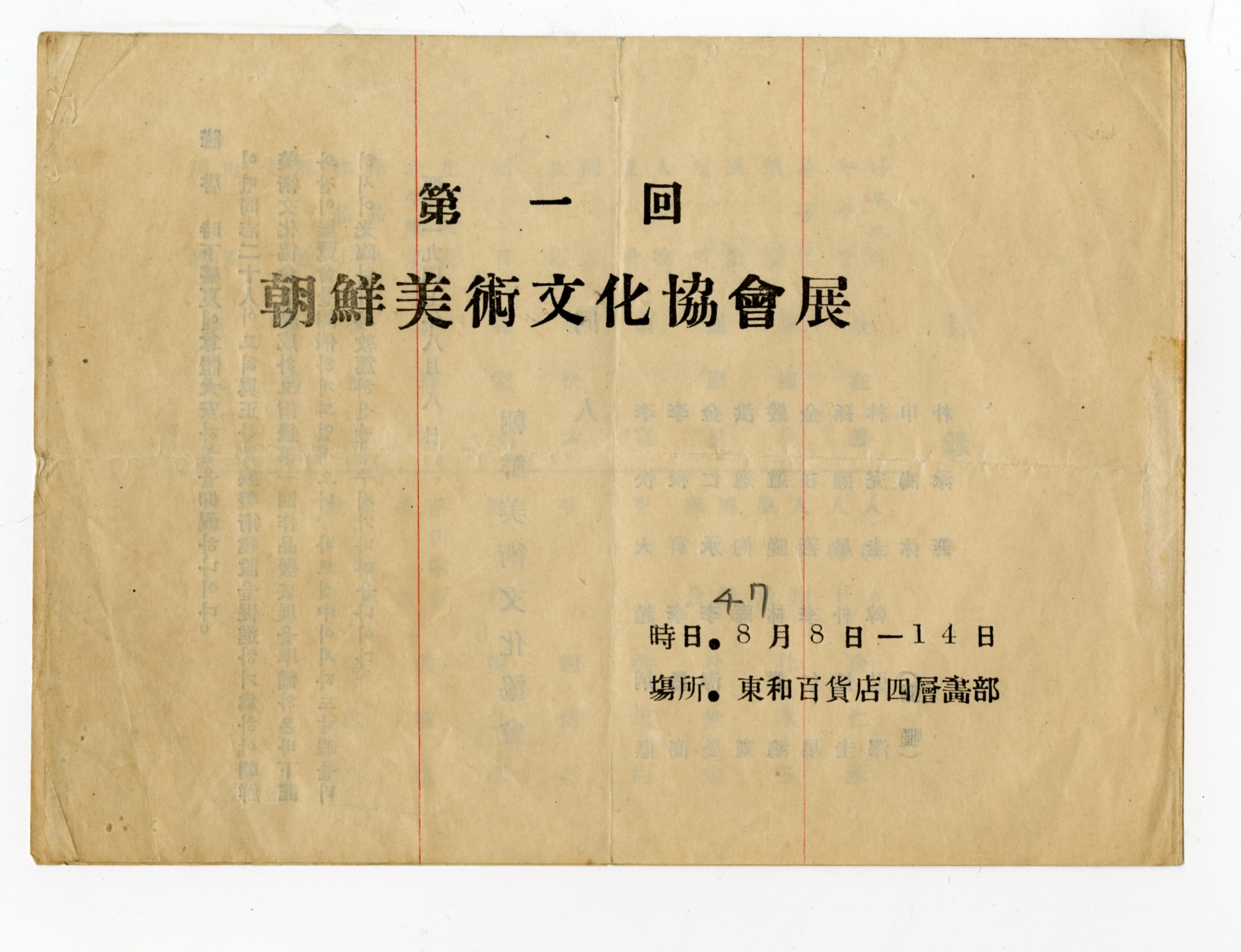
The First Korean Art and Culture Association Exhibition (Joseon misul munhwa hyeophoe) Exhibition, Leaflet, 1947, Image provided by Kimdaljin Art Archives and Museum
Korean Art and Culture Association
* Source: Multilingual Glossary of Korean Art. Korea Arts Management Service
Related
-
Lee Kyusang
Lee Kyusang (1918-1967) was born in Seoul, the son of a wealthy furniture merchant. He graduated from Whimoon High School and moved to Japan. He submitted his abstract works to the Geukyeonsa coterie exhibition in 1937 and the Exhibition of Jiyu Bijutsuka Kyokai in 1939. In 1941, he attended the Department of Painting at Nihon Art School in Japan, but it is not clear if he graduated. After independence, he participated in the New Realism Group Inaugural Exhibition in 1948, the Contemporary Art Exhibit sponsored by Chosun Ilbo in 1957, and from 1959 to 1963. He taught art at Kyungbok High School and was appointed as an associate professor at Hongik University in 1961. Lee Kyusang was one of Korea's early abstract artists. He consistently focused on abstract art while his colleagues, such as Kim Whanki and Yoo Youngkuk, switched to semi-abstraction. In the 1950s, he incorporated religious symbols, such as a transformed cross, into his work after he converted to Catholicism, as a means to create simple yet profound pieces of work.
-
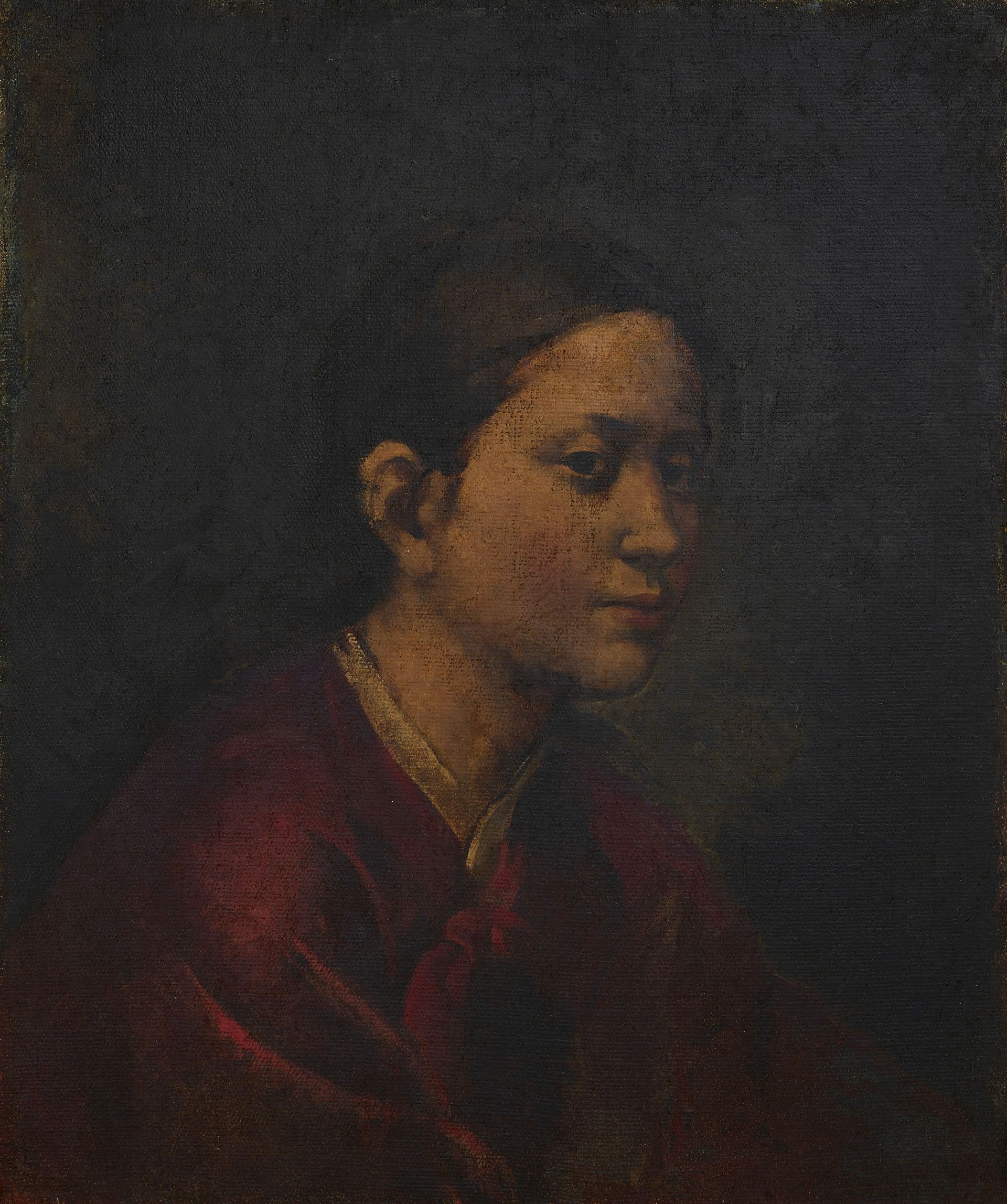
Lee Qoede
Lee Qoede (1913-1965) was born in Chilgok, Gyeongsangnam-do as the second son of a wealthy landowner family. He was strongly influenced and supported by his brother, leftist intellectual Lee Yeoseong and specialized in the history of art, clothing, and folklore. He graduated from Soochang Elementary School in Daegu in 1928, Whimoon High School in 1933, and the Department of Western Painting at the Teikoku Art School in Japan. His works, such as Fate (1938), Night Picnic (1939), and Swing (1940), were selected for the Nikakai Exhibition. After his return to Korea, he founded and led the New Artists Association and its exhibitions from 1941 to 1944. After independence, he was appointed as a committee member of the painting division at the Korean Plastic Arts Federation [Joseon johyeong yesul dongmaeng] and a chairman of the Western Painting division at the Korean Art Alliance [Joseon misul dongmaeng]. After visiting North Korea, he became a centrist and founded the Korean Art and Culture Association [Joseon misul munhwa hyeophoe]. where he was appointed as a chair. In 1948, he joined the National Guidance League. While working as a lecturer at Hongik University, the Korean war broke out, after then and he contributed to the Korean Art Alliance. He escaped Seoul just prior to the 1950 September operation to retake the city but was arrested by the South Korean army and held in prison camps in Busan and Geoje. In an exchange of prisoners, he opted to go to North Korea. In 1988, when the ban on artists who defected to North Korea was lifted, his family revealed his works, such as the People series, A Beggar, and Fate, to the public. He then was re-evaluated as one of the most significant artists in Korean modern art history.
-
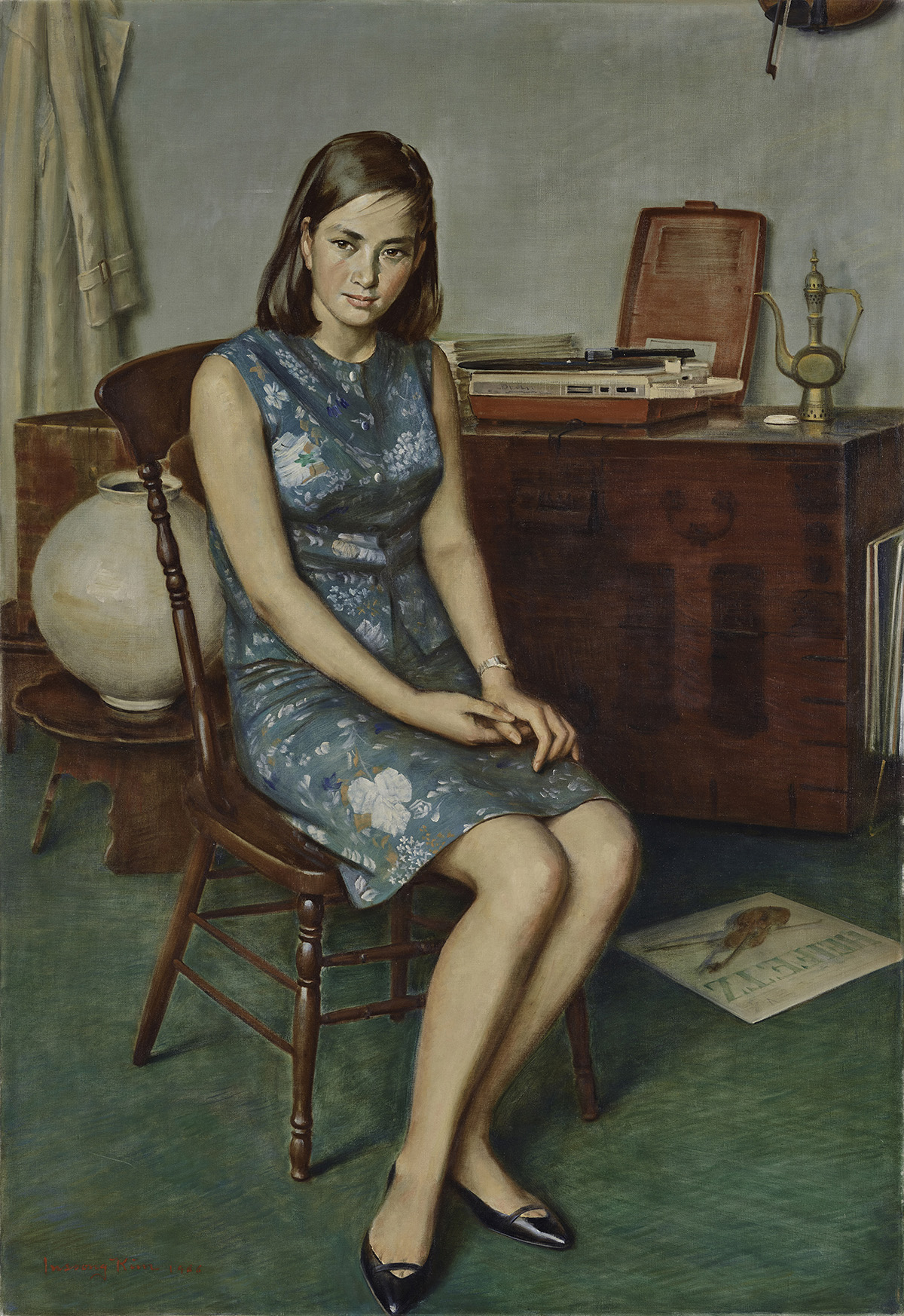
Kim Insoong
Kim Insoong (1911-2001, pen name Jiyeon) created paintings in the Western Academic manner, using precise lines, realistic forms, and harmonious compositions. He was born in Kaesong in 1911 to a merchant family who traded in ginseng and completed Kawabata Art School in Japan in 1932. He then attended Tokyo School of Fine Arts, and his work, A Naked Woman, won the Changdeokgung Palace grand prize at the Joseon Art Exhibition [Joseon misul jeollamhoe] in 1938. He produced figure paintings of celebrities, landscapes, and historical sites in Korea, in later life focusing on the creation of rose-themed works. In 1945, he actively participated in the foundation of the first art department in Korea at Ewha Womans University. Representative of his balanced academic style are paintings such as Art Studio, which depicts an artist sitting on a chair, and was submitted to the sixteenth Joseon Art Exhibition, or The Melody of Spring (1942).
Find More
-
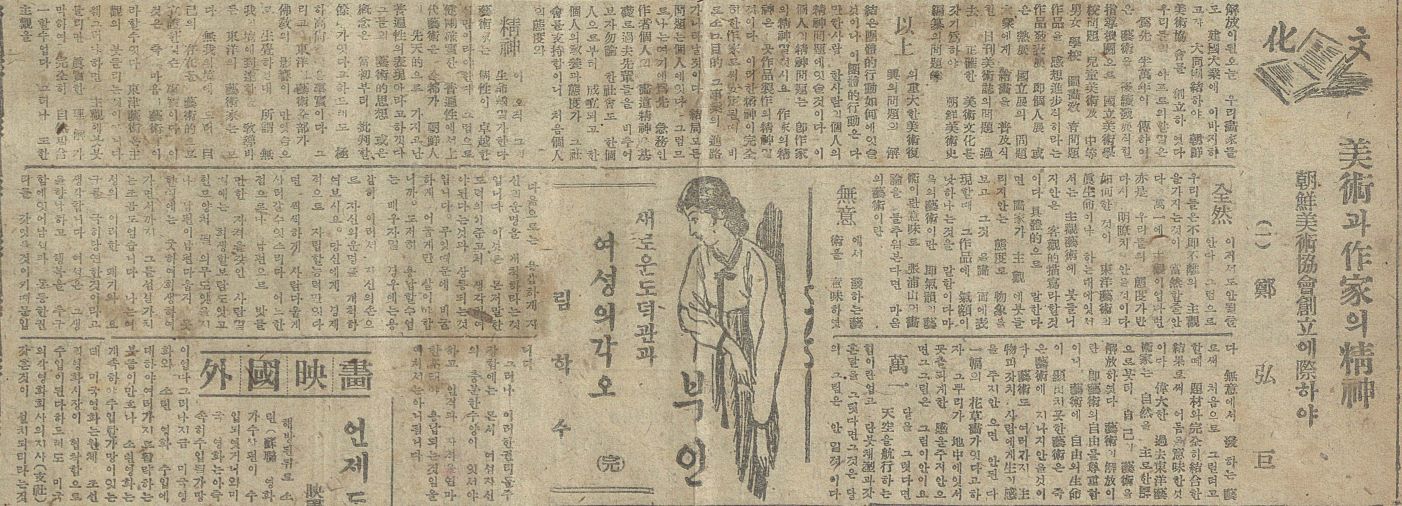
Korean Art Association
An organization established in 1945 under the leadership of Ko Huidong after the Headquarters for the Korean Art Construction Headquarters (Joseon misul geonseol bonbu), the largest art organization of the time, disbanded. Criticizing the political activism of the Korean Art Construction Headquarters, the Korean Artists Association avowed political neutrality Ko Huidong was the president of the association, and famous artists of the time such as Lee Chongwoo, Kim Yongjun, Kim Jukyung, No Soohyeon, and Gilbert Pha Yim all participated in the association. The association claimed to be the successor of the Society of Painters and Calligraphers, which was active from the late 1910s to the 1930s. The association planned the establishment of art schools, the publication of books on art history, the holding of exhibitions, and the publication of art magazines. Contrary to its avowed political neutrality, however, Ko Huidong, who held right-wing beliefs, continued with his pro-government activism, and numerous members who opposed this left the association to form the Korean Art Alliance (Joseon misul dongmaeng) in 1946.
-
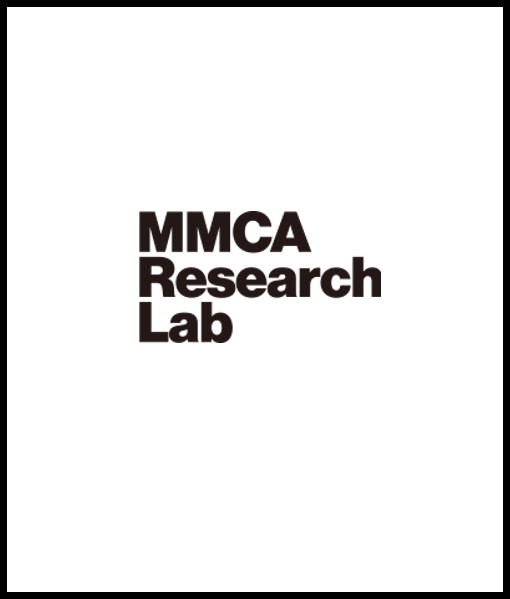
Eom Doman
Eom Doman(1915-1971) was an artist who was active in Western painting and industrial art from the Japanese colonial era through the period of Korea’s liberation from Japan, and defected to North Korea during the Korean War. He graduated from Jugyo Public Common School in Seoul in 1929. He won an honorable mention at the Calligraphy and Painting Association [Seohwa hyeophoe] Exhibition in 1931 and the Joseon Art Exhibition [Joseon misul jeollamhoe] in 1937 with Portrait of Girl. In 1932, he took a job as a painter at the Dongyang Offset Printing Company in Seoul, and he worked as an art director in the design department of Yuhan Corporation from 1936 through 1939. In 1936, he participated in the founding exhibition of Nokgwahoe along with Lim Gunhong, Hong Sunmun, Song Jeonghun, Choi Gyuman, and others. Eom submitted his Figure and Landscape to the exhibition. His activity in Nokgwahoe continued until 1938. In 1939, he moved to Hankou in China with his closest friend Lim Gunhong, and opened the Hankou Art and Advertising Agency. Like Yerim Studio, which Lim Gunhong and Eom Doman operated in Gyeongseong, the Hankou Art and Advertising Agency engaged in a wide range of commercial art activities encompassing advertising for movie theaters and murals, interior design, and the production of cards and postcards. Immediately after Korea’s liberation from Japan, Eom returned to Korea and joined several art organizations. For instance, he was a founding member of the Association of Korean Industrial Artists ([Joseon saneop misulga hyeophoe], renamed the Korean Industrial Artist Association [Daehan saneop misulga hyeophoe] in 1954) established in December 1945. He was also active in the Korean Plastic Arts Federation [Joseon johyeong yesul dongmaeng] (established in 1946) and the Korean Art and Culture Association [Joseon misul munhwa hyeophoe] (established in 1947), among other organizations. The Korean Industrial Artist Association was an organization that industrial artists like Han Hongtaik, Lee Wanseok, and Jo Neungsik founded in order to “organically and comprehensively combine art and industry” and “create popular living art.” His activity in the Korean Art and Culture Association lasted until 1949. Among his colleagues were Lee Qoede, Lee Insung, Lim Gunhong, Han Hongtaik, Cho Byungduk, and Son Eungsung. In 1946, Eom held the Six Western-style Painters exhibition together with Lim Gunhong and Han Hongtaik, with whom he collaborated in several organizations. After the outbreak of the Korean War, he defected to North Korea during the recapturing of Seoul on September 28. In North Korea, he worked in various institutions and organizations, including the Korean Art Manufactory [Joseon misul jejakso] and Korean Artist Federation [Joseon misulga dongmaeng], where he produced propaganda posters and realistic oil paintings.
-

Korean Art Alliance
An organization created in 1946 in North Korea. as the result of a merger between the socialist Korean Artist Federation (Joseon misulga dongmaeng), the politically moderate Korean Plastic Arts Federation (Joseon johyeong yesul dongmaeng), the Joseon Sculpture Association, and former members of the Korean Art Association (Joseon misul hyeophoe). Together, these associations collaborated to host an Independence Cultural Art Exhibition and founded the Korean Art Alliance (Joseon misul dongmaeng). The Alliance actively conducted enlightenment activities under the doctrine of “Art for Public Awareness” and leftist artists were the primary members. The leadership of the Alliance was comprised of Yoon Hee-soon, Lee Insung, Oh Chiho, and Gil Jinseop. The Alliance’s doctrines included the implementation of democracy, departure from the influences of imperialism, establishment of National Art, and the enlightenment of the populace. The Alliance engaged in raising public awareness about modern art through activities such as street exhibitions, touring exhibitions, and the production of posters and leaflets. The Korean Art Alliance (Joseon misul dongmaeng) was an influential faction within the art community of the 1940s, raising public awareness about art and issuing statements on political events before disbanding in 1948.






